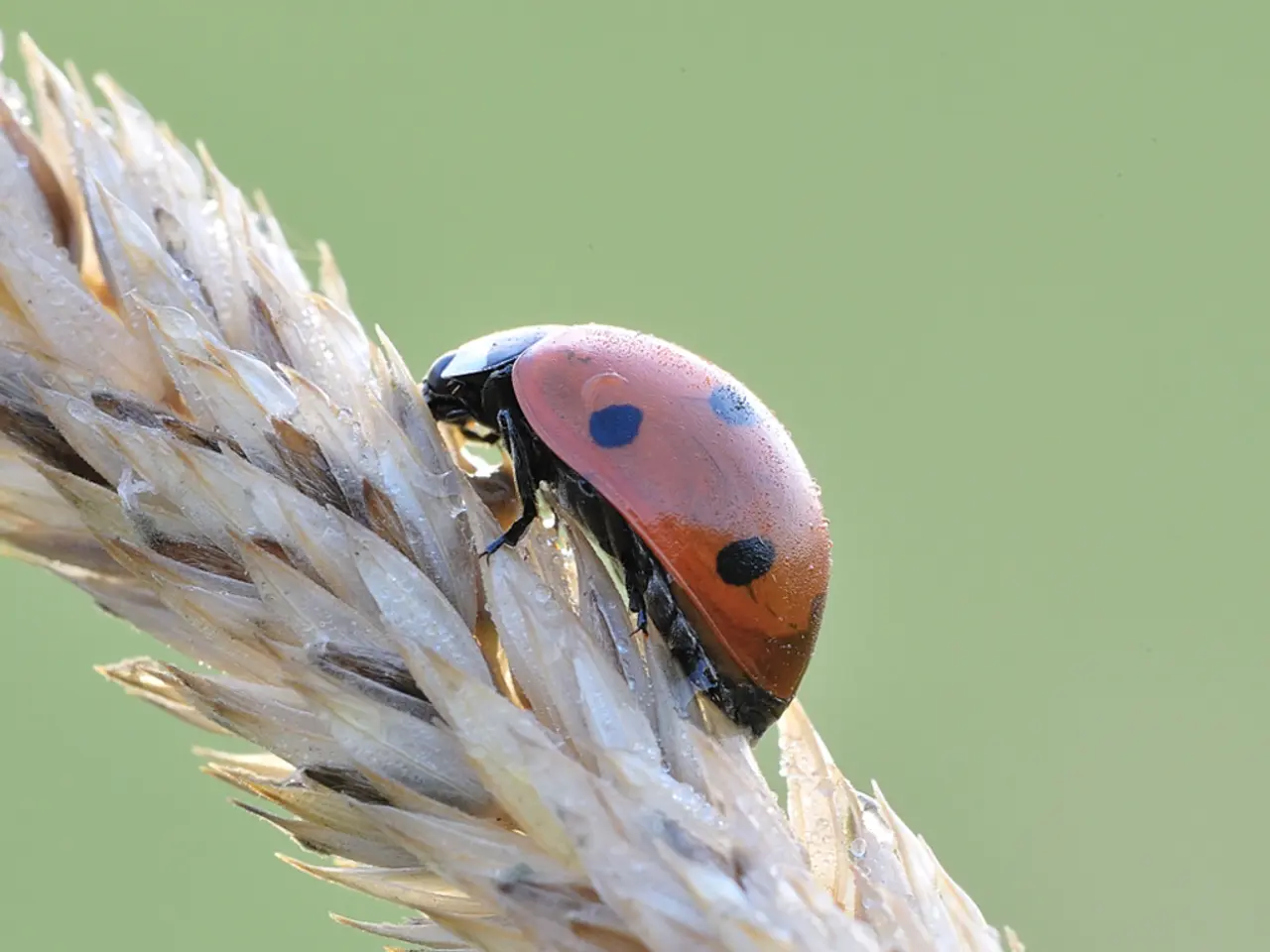Scientists seek hardy wheat strains capable of withstanding viral threats - Scientists seek out genetic variants of wheat that exhibit resistance to viral infections
In the face of rising concerns about aphids and the diseases they transmit, researchers at the Julius Kühn Institute in Quedlinburg, Germany, are working diligently to combat the wheat dwarf virus. This virus, transmitted by certain aphid species, poses a significant threat to wheat crops, leading to yield losses for farmers across Northern Europe.
The focus of the research is on creating resistance against the wheat dwarf virus. To achieve this, the team is carrying out infection experiments on young wheat plants within a protected tent tunnel. The aphids used in these experiments are Rhopalosiphum padi and Sitobion avenae, species known to carry the wheat dwarf virus and the Wheat Streak Mosaic Virus.
The researchers are also harvesting wheat plants for examination, testing each one for resistance against the wheat dwarf virus. This painstaking work is crucial, as breeding new wheat varieties with resistance to the virus is a lengthy process. It requires a deep understanding of the genetics behind the resistances and the inheritance of resistance properties.
The research partnership extends beyond German borders, with scientists from France also contributing to the project. Together, they aim to clarify the genetic basis for resistance and develop new, resilient wheat varieties that can withstand the threats posed by aphids and the viruses they carry.
Unfortunately, the number of aphid species in Northern Europe is expected to increase due to climate change, making the work of these researchers more pressing than ever. As the aphid acts as a taxi for the wheat dwarf virus, understanding and combating this threat is vital for the future of wheat farming in the region.
The Julius Kühn Institute remains a key partner in this research, working tirelessly to find solutions that will protect crops and ensure food security for years to come. Their efforts are a testament to the power of collaboration and the importance of scientific research in addressing the challenges of our changing climate.
Read also:
- Nightly sweat episodes linked to GERD: Crucial insights explained
- Antitussives: List of Examples, Functions, Adverse Reactions, and Additional Details
- Asthma Diagnosis: Exploring FeNO Tests and Related Treatments
- Unfortunate Financial Disarray for a Family from California After an Expensive Emergency Room Visit with Their Burned Infant








